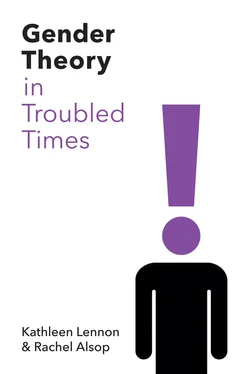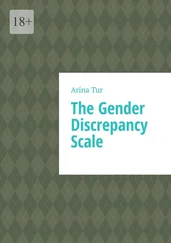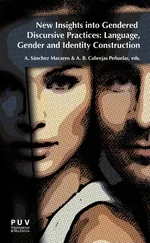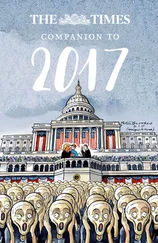The difficulty here is the viewing of the hormone testosterone as essentially a male hormone, with the assumption that higher levels make someone more male than female. But from the nineteenth century it has been known that this is a flawed picture. Hormones are not sex exclusive. What is being found in these athletes is a naturally occurring variation in bodies that are in other respects recognized as female, just as the length of Usain Bolt’s legs and those of some basketball players is a naturally occurring variation. Katrina Karkazis raises the question ‘And what of testosterone and athleticism?’ and concludes that the answer is far from simple. Although giving testosterone can increase muscle mass and power, it does not seem to build a better athlete. ‘Labelling women “biological males” draws a dubious connection between sex, testosterone, and athleticism that relies on long-discarded ideas that men and women can have a “true sex”, that testosterone is a “male sex hormone”, and that testosterone is the key to superior athleticism. None of these are true, and it’s long overdue that people stop saying they are’ (Karkazis 2019).
The sports federations have become embroiled in controversy by treating binary sex difference as a biological matter to be fixed by experts, when there are so many diverse ways in which the distinct biological markers of sexual difference can be combined together. Vanessa Heggie points out :
there has never been scientific (or philosophical, or sociological) consensus that there are simply two human sexes, that they are easily (and objectively) distinguished, and that there is no overlap between the two groups. Nor have [scientists] agreed that all of us are ‘really’ one sex or the other even if bits of our bodies or our identities don’t entirely match that sex. You can examine someone’s genitals, their blood, their genes, their taste in movies, the length of their hair, and make a judgement, but none of these constitute a universal or objective test for sex, let alone for gender.
When groups, whether in sport or elsewhere, turn to scientific definitions to try to exclude some people from the category of ‘woman’, it is worth remembering this fact: scientists have never agreed on which kind of sex really matters to our identities, or to our right to call ourselves men, or women, or neither, or both. (Heggie 2015)
The link between biology and sexed identity has been rendered even more complex with the increased visibility of trans bodies – that is, bodies initially assigned to the categories male or female that come to resist that position by invoking the other side of the binary or claiming a position as non-binary. Although trans people sometimes articulate their subjectivity in terms of having a male brain in a female body, or vice versa, there is little biological evidence to support such a claim, particularly in the light of neurobiological research rejecting a division into male and female brains. Nor, thus far, is there any indication of there being biological markers which signal transitioning choices. But this does not make biology irrelevant. In ways which we will explore more fully in chapter 7, the body is of pivotal importance to trans identity. Its visible morphology and characteristics, such as breasts, facial hair and muscular structure, are used as markers of sexed identity, which enable interpersonal recognition within social space. Consequently, many trans people modify their bodies through surgery and the taking of hormones. Testosterone, for example, whose determining power we have been resisting thus far in this chapter, is a widespread aid to trans people who are seeking a more masculine appearance in order to enable recognition, by others and themselves, of their sexed identity. The consequence is to make even more complex the relation between biology and sexed identity. For there are men with many of the biological features of many other men, in terms for example of bodily morphology, hormone levels, facial hair and musculature, who nonetheless have retained ovaries, have wombs and give birth. This undermines Alcoff’s suggestion (see above) that we can anchor sexed identity in possible roles in reproduction.
Nature/culture and the new materialism 6
The distinction between sex and gender mirrored a supposed distinction between nature and culture. Sex was nature. Gender was culture. The arguments in the previous sections challenge that distinction from the perspective that culture influences the way in which we interpret the biological data. Nothing is simply given. But that does not mean that the natural world, what we think of as the data of biology, has no role to play in our practices of assigning and claiming sexed difference. Arguments, now identified under the term ‘new materialism’, also challenge a picture of ‘culture’ as something that can float free of, and be unconstrained by, nature. The distinction between nature and culture (sex/gender) is challenged not only by the recognition that culture mediates what we count as nature but also by a recognition that nature has some explanatory role in relation to culture. The material itself has agency. We must not, argues Colebrook, ‘conflate the being of a thing with the mode in which it is known’ (Colebrook 2000: 78; original emphasis). What is termed the new materialism stresses that, although culture ‘structures how we apprehend the ontological, it doesn’t constitute it’ (Alaimo and Hekman 2008: 98). Instead culture itself is viewed as anchored in and interwoven with nature. Nature is something which itself is an agent in the formation of culture. In relation to accounts that are offered of sex and gender, such a focus is linked to biological accounts of the body. Surely, it might be thought, there are facts about my body which bear some relation to my identity as male or female or intersex or transsex? Aren’t there some biological features which suggest/ground the cultural distinctions we adopt?
The new materialism, then, identifies a project of bringing ‘the materiality of the human body and the natural world into the forefront of feminist theory and practice’ (Alaimo and Hekman 2008: 1). The narrative surrounding this project has sometimes been articulated like this. Feminists have been suspicious of biological accounts of the body because they associated them with a form of determinism that suggested the inevitability not only of a binary sex difference but also of the psychological features, social roles and bodily styles which are taken to accompany it. In the flight away from biology, however, there is a danger of ignoring the materiality of our bodily life and viewing our everyday sexed categories as exclusively the result of our cultural classificatory practices. But this is problematic, for, it is suggested, it makes our categorization of the world float free of constraint. Moreover, it appears to rule out engaging with the scientific/biological in any positive way. Instead we are limited to critique. Therefore we need to return to biology to explore our bodily materiality and its intersections with our classification into sexed kinds. 7In the words of Gill Jagger (2015), summarizing this new materialist work:
Uniting the various strands in the new materialism … is a broad aim to give the materiality of matter a more active role. This includes redressing the ‘biophobia’ that would seem to characterize much contemporary feminist body theory … It also involves rethinking the nature/culture dichotomy to recognize that it is not just that nature and/or matter are products of culture but that culture is also in some sense a product of nature. Indeed, nature is that without which culture wouldn’t exist at all.
Читать дальше












